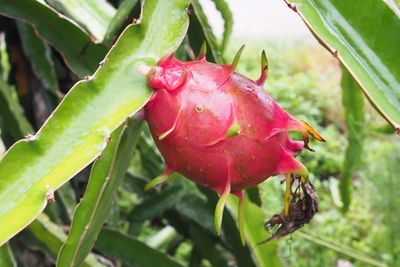Reasons for No Fruit on Pitaya Cactus
There are a few possible reasons your pitaya won’t fruit. The most likely cause is inadequate growing conditions. The dragon fruit cactus is a tropical plant, which means it likes heat. If temperatures are below 65 degrees F. (18 C.), your plant is unlikely even to form flowers. If it’s cool out, bring your plant indoors or, better yet, move it to a greenhouse to try to induce flower and fruit production. Another common problem is light. A pitaya needs lots of light to fruit, and especially if you’re keeping yours indoors, it just might not be getting enough. Make sure your plant is in a spot that receives a full six hours of sun per day. If you can’t manage this indoors, place it under bright lights instead. It’s also possible your dragon fruit won’t develop fruit because of a lack of moisture. Since it’s a cactus, many gardeners assume the pitaya doesn’t need much water. In fact, it likes its soil to be kept consistently moist and should be given about an inch (2.5 cm.) of water per week. Dragon fruits usually only develop in the summer, when temperatures are high and the days are long. If it’s winter you likely won’t see any fruit. By increasing the above elements, however, you can extend the fruiting season somewhat.
How to Get Dragon Fruit
Pitaya cacti reach maturity quickly and with proper care should produce fruit for 20 to 30 years. Proper care is key, though. The plants are very long, and can reach 40 feet (12 m.) in length. To encourage fruiting you should give your cactus a tall, sturdy trellis to climb. Always remove damaged or dying branches. Prune the tips of the uppermost branches to encourage more lateral growth and fruit development.
